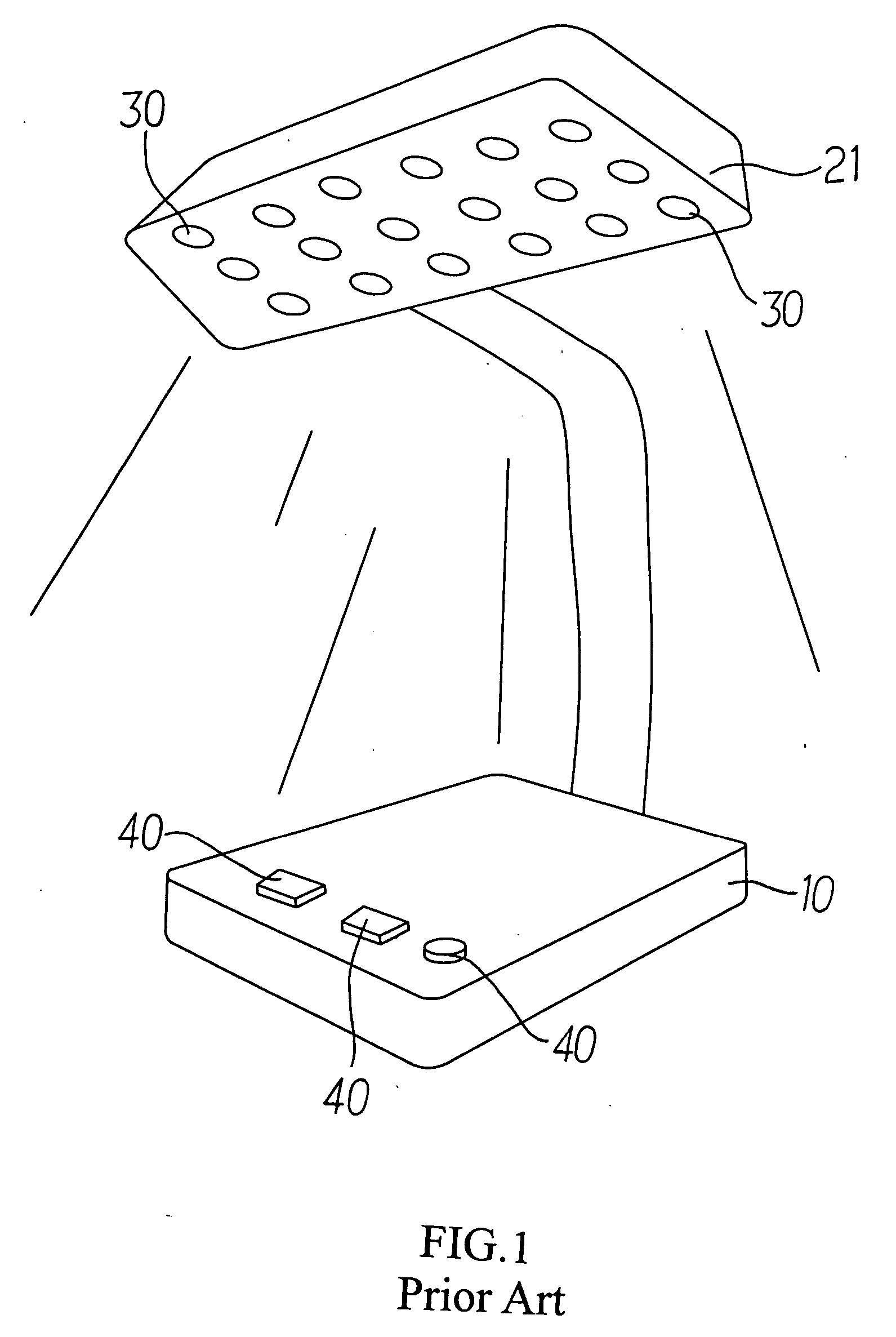Programmable photo power source
a photo power source and programmatic technology, applied in light therapy, radiation therapy, therapy, etc., can solve the problems of toxicity to the cell where the photosensitizers, purchase price and maintenance cost were comparatively more expensive, and achieve better irradiation results
- Summary
- Abstract
- Description
- Claims
- Application Information
AI Technical Summary
Benefits of technology
Problems solved by technology
Method used
Image
Examples
Embodiment Construction
[0023] Referring to FIGS. 3 and 4 for a preferred embodiment of the present invention, a programmable photo power source is related to a light emitting source assembly 20 comprised of at least two irradiation panels 21 each including multiple surface-mounted LEDs 50 to generate light source. The assembly 20 is secured on a base 10 and adapted with a control panel 60 to control operation time, hours, current, and wavelength of each of those surface-mounted LEDs 50.
[0024] Wherein, one or multiple light emitting chip 51 is built in each LED 50 to permit any single light emitting point within the assembly 20 to provide changes in wavelength of light thus to expand the range of application for the assembly. As illustrated in FIG. 5, a reflective material 22 is provided to each irradiation panel 21 in the assembly 20 to boost the luminance of those LEDs 50. The reflective material 22 together with the inherited performance of greater light emitting angle of those LEDs 50 contributes to t...
PUM
 Login to View More
Login to View More Abstract
Description
Claims
Application Information
 Login to View More
Login to View More - R&D
- Intellectual Property
- Life Sciences
- Materials
- Tech Scout
- Unparalleled Data Quality
- Higher Quality Content
- 60% Fewer Hallucinations
Browse by: Latest US Patents, China's latest patents, Technical Efficacy Thesaurus, Application Domain, Technology Topic, Popular Technical Reports.
© 2025 PatSnap. All rights reserved.Legal|Privacy policy|Modern Slavery Act Transparency Statement|Sitemap|About US| Contact US: help@patsnap.com



